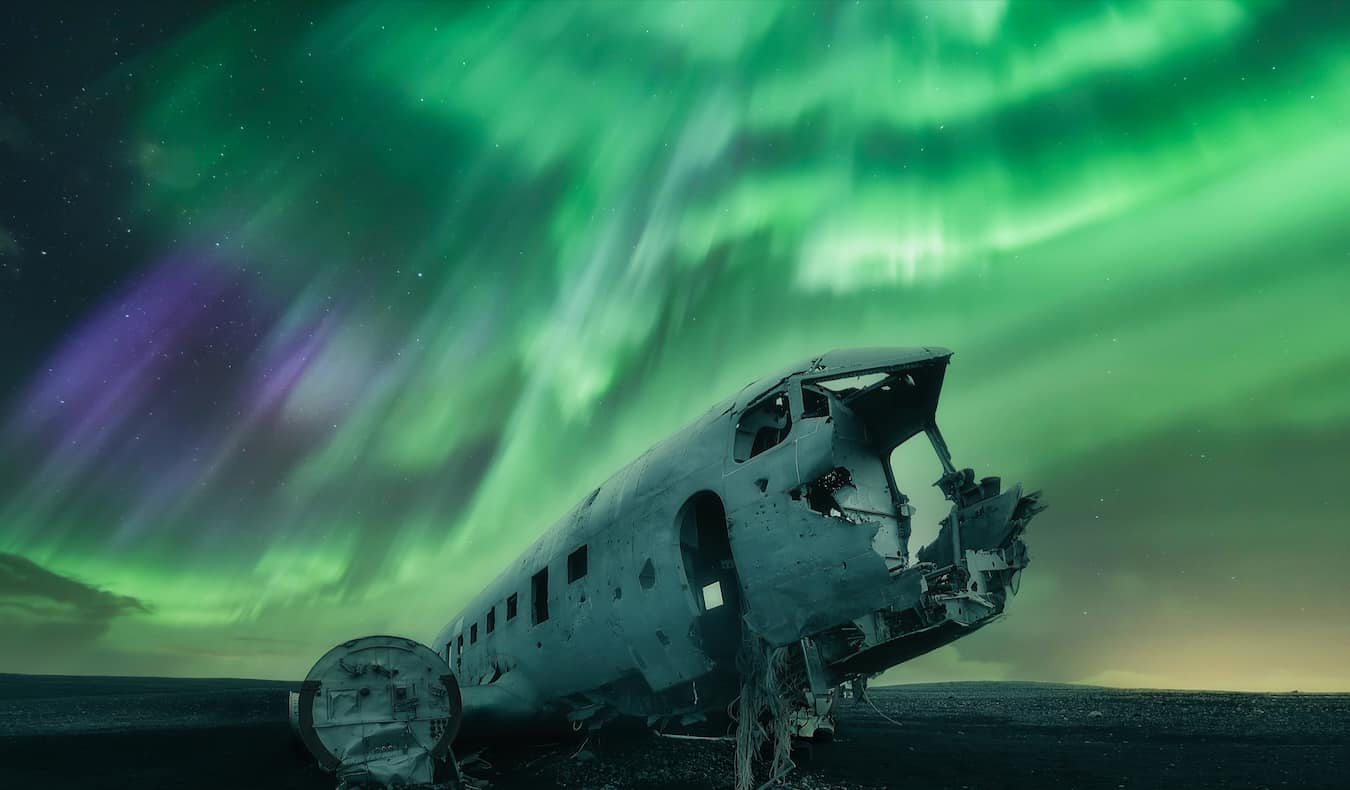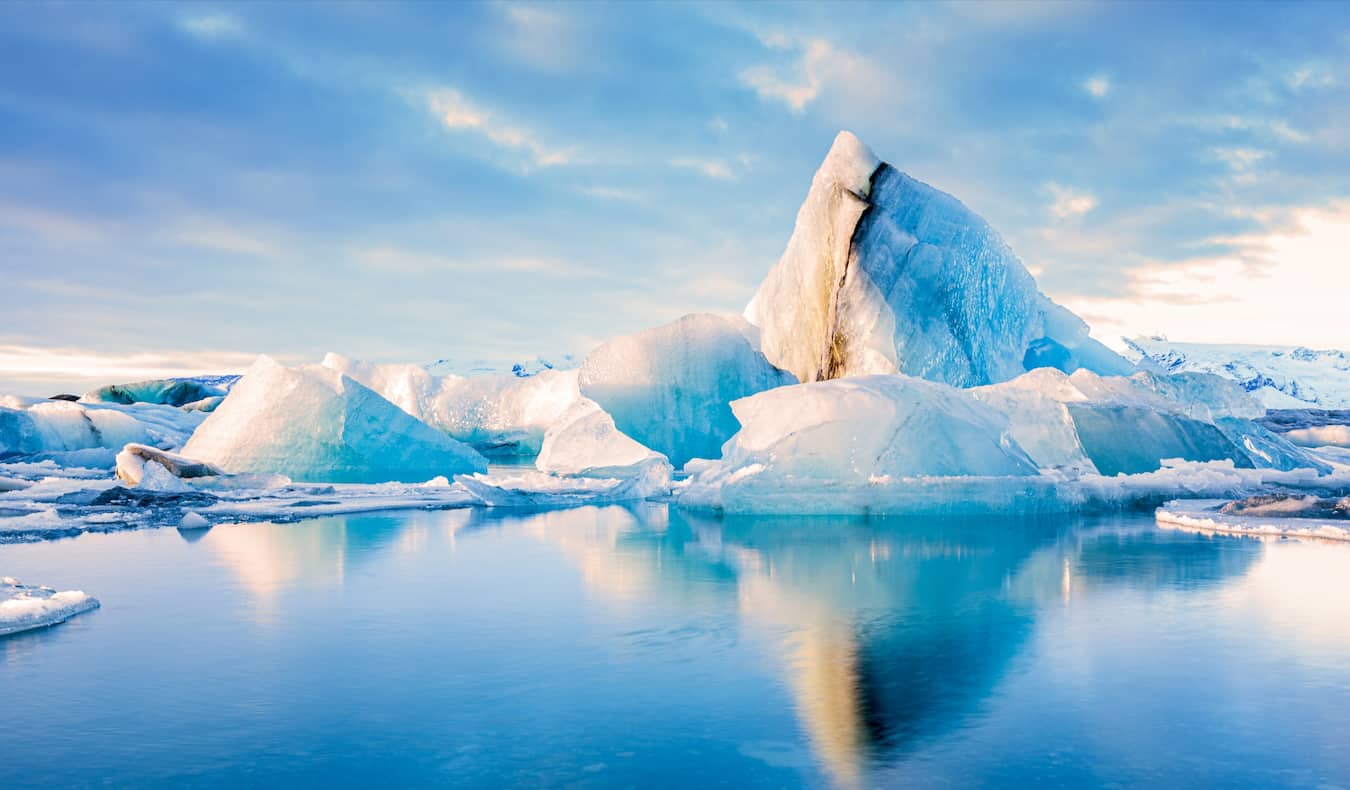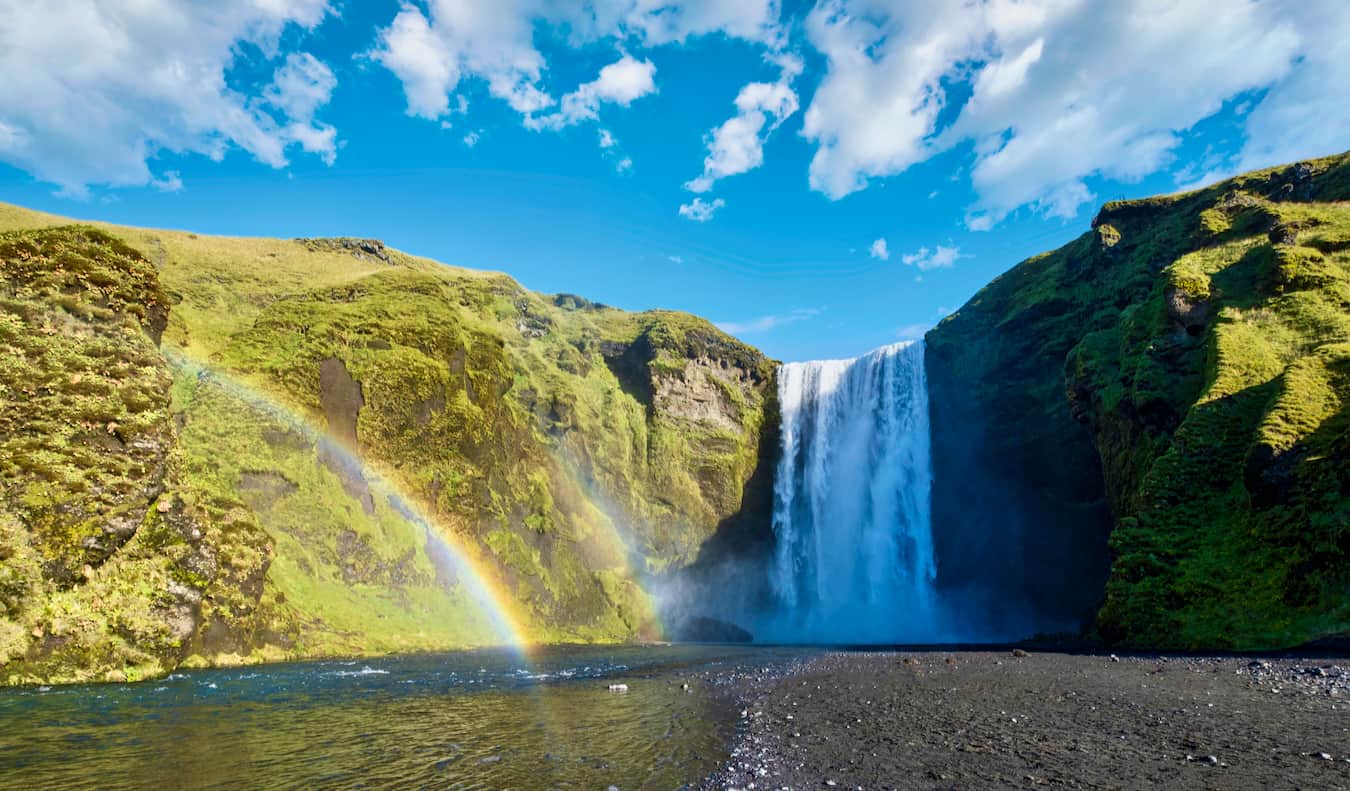
Posted: 7/24/23 | July 24th, 2023
Iceland. It’s a land of sheep, the northern lights, volcanoes with unpronounceable names (try saying Eyjafjallajökull), majestic waterfalls, craggy mountains, and otherworldly landscapes.
To me, it is one of the most beautiful places on earth.
I mean, how can such a tiny island have such a diverse and beautiful terrain? It changes every few miles — from verdant fields, snowy mountains, and brilliant glaciers to looking like Mars. It never ceases to amaze me.
I had high expectations when I first visited. I’d seen movies and pictures in magazines of a land with jagged mountain peaks, volcanoes with desolate lava fields, rolling hills with grazing sheep, and glaciers that stretched for miles.
Iceland lived up to all those expectations; you could easily spend a month here and not see everything.
Sure, the country has seen an explosion in tourism in recent years and it’s gotten a lot more expensive. But most tourists concentrate in the south near Reykjavik. Once you head out of the capital region, it’s mostly you and nature (I only saw three other tourists in my week in the Westfjords — during peak season)!
To help you plan your trip and ensure you make the most out of your visit, here’s my list of the best things to do in Iceland!
Table of Contents
- 1. See the Northern Lights
- 2. Drive The Golden Circle
- 3. Go Whale Watching
- 4. Explore Reykjavík
- 5. Explore the Westfjords
- 6. Soak in a Relaxing Lagoon
- 7. Visit Jökulsárlón (The Jökulsár Lagoon)
- 8. Do a Glacial Trek
- 9. Admire the Waterfalls
- 10. Go Hiking
- 11. See Puffins
- 12. Visit the Penis Museum
- Get the In-Depth Budget Guide to Iceland!
1. See the Northern Lights
From September to April, the Northern Lights become more visible here. These dancing lights are one of the greatest natural wonders in the world. To witness the aurora borealis in all its glory requires patience, luck, and darkness. The country towns in the north are the best place to see the lights, especially during periods of “low” activity. Though if the lights are really strong, you can sometimes see them in Reykjavik.
This is an activity you can do yourself if you rent a car (driving here is super easy as long as it’s not the middle of winter). However, there are also tons of tours available — including Northern Lights tours from Reykjavik.
2. Drive The Golden Circle
The Golden Circle is the popular tourist route that includes Gullfoss (a waterfall), the Geysir Geothermal Area, and Thingvellir National Park. It makes an easy day trip from the capital or airport, so people on a short layover always visit this area. You can easily drive the whole route in a day. Along the way, there are a few farms where you can stop and see Icelandic horses. The route — and its sights — are free too!
The main three sites of the Golden Circle are:
- Gullfoss – Fed by Langjökull, Iceland’s second biggest glacier, this is one of the most popular and most photographed waterfalls in the country. While not the biggest or most majestic, its V shape is unique and the water is powerful as it tumbles over 30 meters (105 feet) into a steep-sided canyon, kicking up a wall of spray. On sunny days, the spray creates shimmering rainbows over the gorge. This is a truly amazing spectacle and a rewarding scene after a short hike.
- Geysir – A famous hot spring in Haukadalur Valley, Geysir itself seldom erupts anymore, but nearby Strokkur spouts 15-20 meters (50-65 feet) of water every 10 minutes. There are also numerous colored hot pools in the area along the path. If you want to hike up the mountains nearby (it takes 20 minutes to get to the top), you’ll be rewarded with picturesque views of farmland.
- Thingvellir – This place is full of hiking trails and stunning camping grounds, but its big draw is that it’s the only place in the world where you can see two major tectonic plates drifting apart above sea level. Walking through the park takes a good 1-2 hours, but the landscape is gorgeous and it’s not a difficult walk. You can also scuba diving between the plates and there are some good guided walks.
The best way to see the Golden Circle is by car so that you have the flexibility to come and go as you please (you can get there before the tourist buses as well). Rentals are relatively affordable in Iceland too as long as you book early.
However, if that’s not an option there are daily tours from Reykjavik that make seeing the Golden Circle a breeze.
3. Go Whale Watching
Minke, fin, and humpback whales are the most commonly seen whales in Iceland, which is home to around 20 different species (if you’re lucky, you might see orcas or sperm whales). While whale hunting has been a large industry in the past (with most exports going to Japan), as hunting declines, whale watching has replaced it as a sustainable activity for tourists. The prime whale-watching season is April–September, with most tours leaving from Reykjavik or Akureyri (the main city in the north).
Whale watching tours start at 10,000 ISK and usually last 2-3 hours.
4. Explore Reykjavík
This hip capital is awash in thriving cafes, high-energy clubs, friendly pubs, and a brightly colored old town with rows of wooden houses clustered together. It’s more like a giant small town than a city (only 123,000 people live here). Though it’s super small, it’s worth a few days to really get a feel for the art and café culture of the city.
And if you’re a night owl, you’ll love the party scene (Icelanders know how to drink and the nights go late here).
I love this city and never find myself bored here. From reading in cafés to wandering the coastline to enjoying drinks with my friends, Reykjavik sucks me in during ever visit.
If you want to splash out while you’re here, head to the Blue Lagoon, a relaxing geothermal spa. It’s one of the most popular activities in the country!
5. Explore the Westfjords
The Westfjords is a large peninsula in northwestern Iceland with tons of mountains and a coastline heavily indented by fjords. It’s one of the rawest parts of Iceland and my favorite region. Few people live here and fewer visit, though Icelanders make their way here on summer vacation. It’s an area of tiny towns, fishing villages, deep fjords, mountains, waterfalls, and lakes.
In the summer months, puffins and whales call it their home. In the winter, many of the roads are closed by ice and snow for several months. It’s not easy to get around but locals will let you hitch rides with them because bus service here is infrequent. Be sure to eat at Tjöruhúsið in Ísafjörður for an all you can eat, catch of the day buffet. Delicious!
6. Soak in a Relaxing Lagoon
Most people aim to visit the Blue Lagoon during their trip as it’s the most popular and most accessible hot spring. This huge, milky-blue spa is fed by mineral-rich heated seawater from the nearby geothermal plant. Though it’s the most expensive one, it’s popular for a reason.
There are also many other hot pools in the country. In the north, there are the Myvatn Nature Baths, and you’ll find the famous and free “secret” (but not so secret) mountain springs on the way to Vik. There are plenty of free hot springs all around the island to explore, which is one of the best reasons why you should rent a car for your trip!
7. Visit Jökulsárlón (The Jökulsár Lagoon)
Located in the southeast of Iceland, this ice floe is only a couple of decades old and now one of the most popular attractions in the country. Breiðamerkurjökull Glacier retreated very quickly from 1920 to 1965, leaving this breathtaking lagoon behind, which is up to 190 meters (623 feet) deep. Icebergs float in the lagoon all year. I enjoy just sitting and listening to the ice blocks crash into each other on their way out to sea. You can also take boat trips around the lagoon.
While most people just stop to enjoy the scenery, you can also take a guided tour of the nearby ice cave — part of the largest glacier in all of Europe!
The lagoon is located right on Highway 1 about five hours from Reykjavik if you’re heading east (counter-clockwise) around the island. There is free parking available too.
8. Do a Glacial Trek
During the winter months, the glaciers get a bit sturdier, and groups of tourists are led across them. There’s no better way to see the glaciers than to walk on them, releasing your inner Arctic explorer. Vatnajökull is one of the most popular glaciers to hike, with most people starting their trip in Skaftafell (about 4 hours from Reykjavik). Sólheimajökull is another popular choice as it’s closer to Reykjavik, located near the popular Skogafoss waterfall.
Guided glacier tours usually last a few hours and cost around 13,000 ISK per person.
9. Admire the Waterfalls
There are over 10,000 waterfalls in Iceland; you’ll see them everywhere as you explore. Aside from Gullfoss (mentioned above in the Golden Circle) some of the most popular (and most beautiful) include Dettifoss, the most powerful waterfall in Europe, with a huge volume of water cascading over the falls every minute; Seljalandsfoss, where you can walk behind the falls to get up close and personal; Skogafoss, which can be found along the Skógá River and is one of the most photographed waterfalls in the country; and Svartifoss, which is surrounded by towering black cliffs.
Best of all, they are all free to visit (though there might be a fee for parking).
10. Go Hiking
If you’re craving a multi-day hike, the Laugavegur trail is a 55 kilometer (34 mile) trail between Landmannalaugar and Þórsmörk. You can do the hike in 3-5 days, exploring some of Iceland’s least-traveled interior landscapes. Its well-worn trail, cozy huts, steady stream of trekkers, and frequent signposts make it a relatively safe and logistically easy venture. You can stay in huts for around 10,200 ISK per night or camp in the designated areas outside the huts for just 2,500 ISK.
For a shorter hike, the Fimmvorduhals trail is a beautiful option. It can be done in a day or broken up into a two-day adventure, spanning the distance between Þórsmörk and Skógar. You can either camp or book one of the mountain huts located along the route. Just be aware: the huts sell out fast! The trail is moderately challenging so you’ll need to have solid footwear and be in good shape. Make sure you have rain gear as the weather can change quickly. Hiking is free if you don’t camp and there is a bus that can take you from Þórsmörk back to Skógar if you parked your car there (the bus is around 8,000 ISK each way).
11. See Puffins
Puffins are small, colorful seabirds found in only a handful of places around the world. Around 60% of the population resides in Iceland, making this the best place to see them. Puffins can be spotted nesting all over Iceland between mid-April and mid-August. The larger populations are found on the Westman Islands and in the Westfjords, as well as in certain parts of the East Fjords.
While you can try and spot some yourself, the best way to see them is to book a tour. Short guided tours from Reykjavik cost around 8,000 ISK while combo whale watching and puffin tours cost around 16,000 ISK.
12. Visit the Penis Museum
For a more unique museum experience, head to the Phallological Museum, colloquially known as the Penis Museum. Opened in 1997, and with almost 300 items in its collection, it’s the world’s largest collection of penises and penis-themed art. Some of the most interesting items are whale penises and (allegedly) troll penises! It’s a small museum but it’s incredibly informative — if you’re not too shy! There’s also a penis-themed cafe attached, aptly named The Phallic!
Hafnartorg, Kalkofnsvegur 2, +354 5616663, phallus.is. Open daily 10am–7pm. Admission is 2,750 ISK.
My love for Iceland became an obsession as I’ve been taken aback by the people and the raw natural beauty of the landscape. Don’t let the high prices scare you away — there are plenty of ways to save money while you’re here! So, get inspired, take advantage of the cheap flights, head north away from the crowds, and sit in a hot spring while watching the northern lights. You won’t be disappointed.
Get the In-Depth Budget Guide to Iceland!

Want to plan the perfect trip to Iceland? Check out my comprehensive guide to Iceland written for budget travelers like you! It cuts out the fluff found in other guides and gets straight to the practical information you need. You’ll find suggested itineraries, tips, budgets, ways to save money, on and off the beaten path things to see and do, and my favorite non-touristy restaurants, markets, bars, transportation tips, and much more! Click here to learn more and get your copy today.
Book Your Trip to Iceland: Logistical Tips and Tricks
Book Your Flight
Use Skyscanner to find a cheap flight. They are my favorite search engine because they search websites and airlines around the globe so you always know no stone is left unturned.
Book Your Accommodation
You can book your hostel with Hostelworld as they have the biggest inventory and best deals. If you want to stay somewhere other than a hostel, use Booking.com as they consistently return the cheapest rates for guesthouses and cheap hotels. Two of my favorite places to stay are:
- KEX (Reykjavik)
- Akureyri Backpacker (Akureyri)
Don’t Forget Travel Insurance
Travel insurance will protect you against illness, injury, theft, and cancellations. It’s comprehensive protection in case anything goes wrong. I never go on a trip without it as I’ve had to use it many times in the past. My favorite companies that offer the best service and value are:
- Safety Wing (for everyone below 70)
- Insure My Trip (for those over 70)
- Medjet (for additional evacuation coverage)
Looking for the Best Companies to Save Money With?
Check out my resource page for the best companies to use when you travel. I list all the ones I use to save money when I’m on the road. They will save you money when you travel too.
Want More Information on Iceland?
Be sure to visit our robust destination guide to Iceland for even more planning tips!














